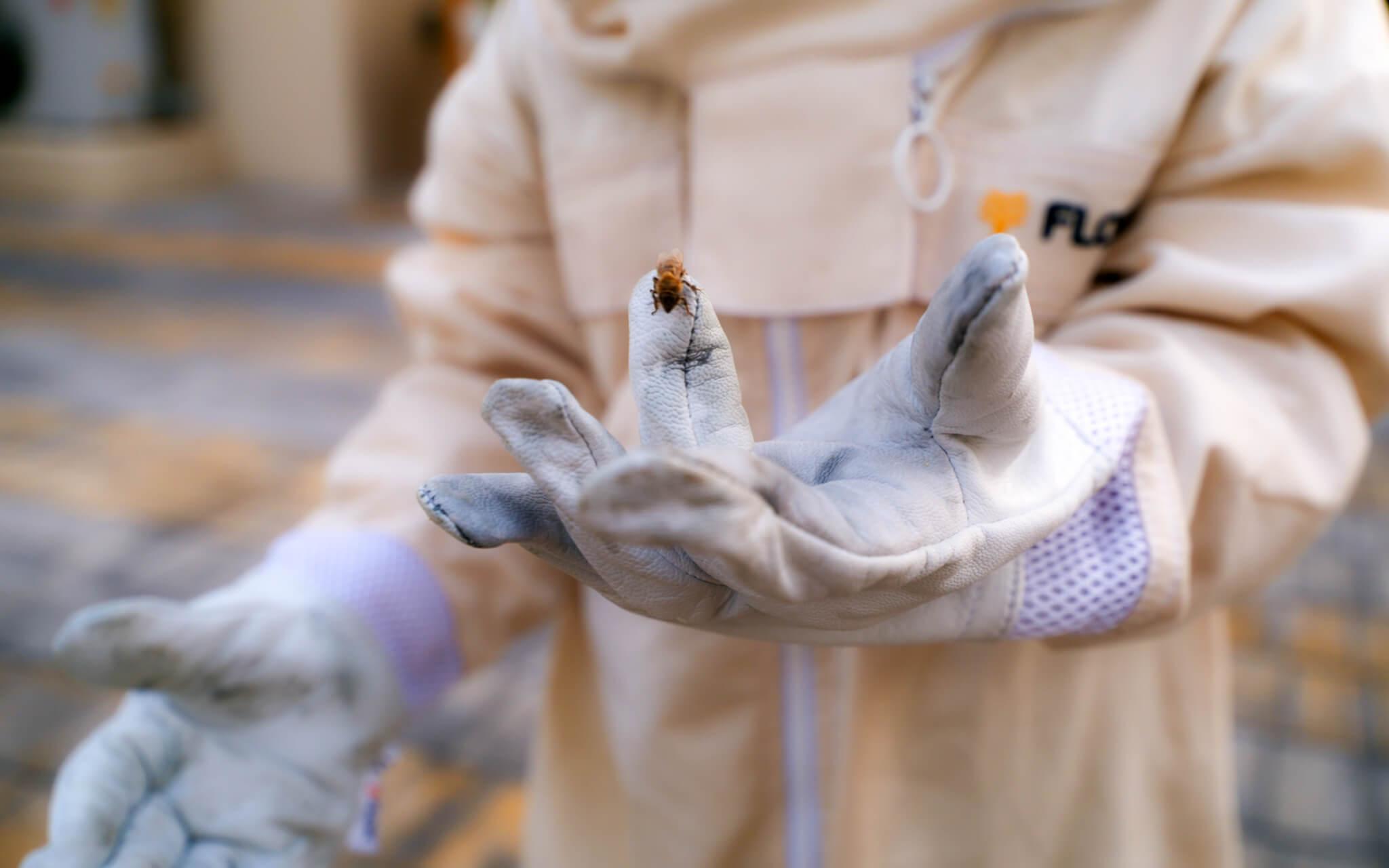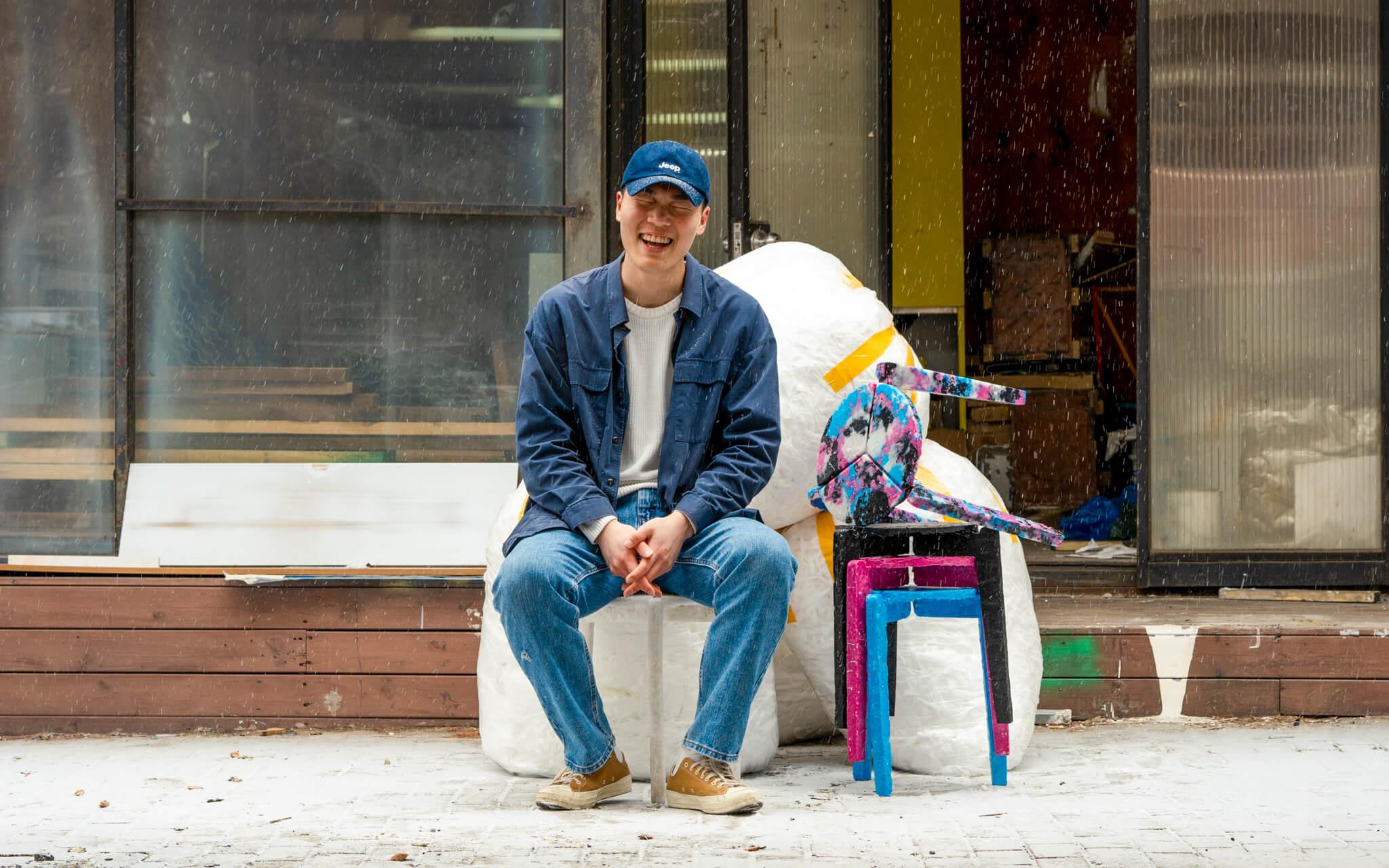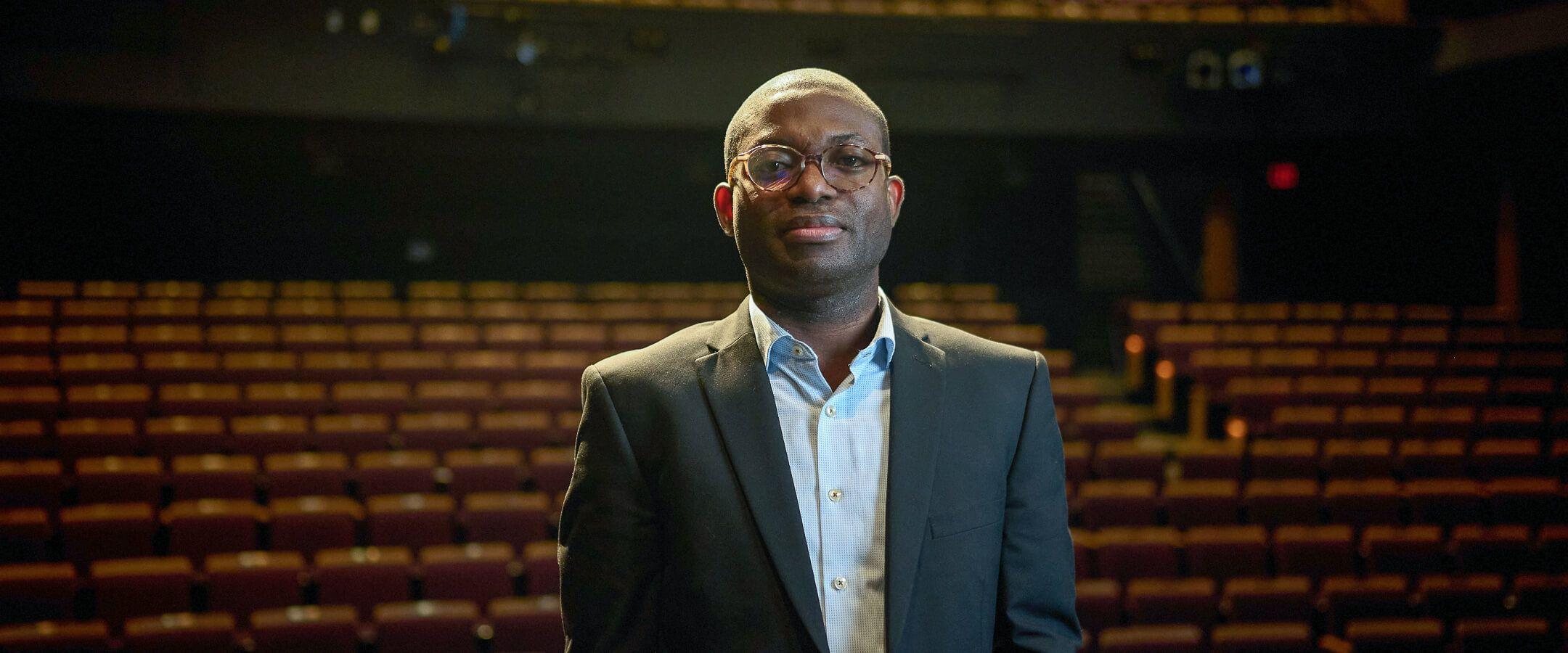Art from the World’s Edge
Cape Farewell, a vibrant community of artists, scientists and communicators, has been working together to spark a cultural awakening about the climate crisis through art.
Amidst the frigid blue icescape of the Arctic, a projector flickers to life.
Harsh white letters settle onto ice blooming out of the deep sea. The message is piercing.
“Will you look your grandchildren in the eyes and tell them you didn’t know?”
This photograph is part of the work Ice Texts by David Buckland, which was created over seven expeditions to the Arctic with a crew of artists and scientists.
“I have this theory, and I think it’s correct, that everybody holds within themselves an artwork,” says Buckland, who, at 75 years old, shows no signs of stopping in what is now a pioneering 25-year-old journey to change the cultural fabric locking us in the climate crisis. “It could be a poem, it could be a pop song, it could be a painting, it could be a little bit of a film, but that informs who we are.”
It was this creative power he aimed to harness when, back in 2001, he began a quest to tackle a fundamental failure fuelling the crisis – the fact that no one seemed to care about it.
As an illustrious artist, designer, filmmaker and sailor, happier over blue seas than on land, the trajectory of his life changed when the world’s most advanced climate prediction model launched in 1999. The HADCM3 (developed at the Hadley Centre) could predict ocean patterns for a thousand years – the very oceans he knew first-hand to be vast, fierce and untameable.
“They mapped the whole of the North Atlantic, and I thought, ‘That’s crazy’. How can you take something as complicated as an ocean and reduce it to a mathematical algorithm?” he says.
“It totally intrigued me because society, especially artists, dream of the future. This was a mathematical scientific tool that said, ‘In 20 years’ time, this is going to happen.’It was one of the big first big climate projections that said, ‘We are in trouble.’”
But it wasn’t the spectre of the climate crisis that drove Buckland to action. Instead, it was the work of the scientists, the human creation of this tremendous algorithm, that empowered him.
Although Buckland contacted them for artistic inquiry, what he heard left an impression. “I went and talked to the oceanographers, and they went – ‘Yeah, this climate stuff is real, but nobody's listening to us,’” he explains.
Can I take a group of artists and writers and filmmakers with the scientists to go up to the Arctic and find a different way of telling the story?
Determined to find a way to communicate the scope of the environmental emergency without using scientific language, Buckland turned to what he knew best – art.
“Can I take a group of artists and writers and filmmakers with the scientists to go up to the Arctic and find a different way of telling the story?” he wondered.
In 2001, Buckland corralled his friends, artists and scientists and founded a historic organisation, Cape Farewell. Cape Farewell aimed to redefine the world’s conversations on climate change. Their message? Climate is culture.
A couple of years later, on a sunny night in the Arctic. Buckland was aboard the schooner Nooderlicht with a group of artists and scientists, falling asleep to the whistling hum of bearded seals.
At the time, it was one of the only visible frontiers of climate change, and they witnessed it together, discussing and exploring avenues of creative collaboration and exploration.
Buckland recounts the first expedition, “Every time we moved to another place, another piece of magic would happen, whether it was looking at polar bears or coming across seals, walruses or other birds. Arctic turns had huge colonies.”
“It was a very wild and extraordinary place. And we knew we had to protect this. This is so magical, and it's all the ice is disappearing.”
“Our planet is in peril, and we need all of that creative energy.”
The outcomes of these singular expeditions and other collaborations were powerful – with more than 140 artists inspired to create works ranging from novels, operas, pop songs and films.
Ian McEwan, acclaimed Booker-prize-winning novelist behind ‘Atonement’ wrote Solar, a novel featuring a famed physicist working with renewable technology. Ryuichi Sakamoto, the Oscar-winning composer, joined the 2008 expedition and composed an exclusive track.
Michael Pinsky created the renowned work Pollution Pods, which is a geodesic dome that simulates poor air quality conditions in certain cities using live data. The work toured Norway, London, New York, COP25 in Madrid and even COP28 in Dubai, giving visceral glimpses into what it means to live in these conditions.
“As the audience walked from one city to another through these domes, they go, Wow, you can't possibly live in air like this. So, it became a very popular artwork. That's what art can do,” Buckland says.
The road was paved with obstacles. For starters, no one had walked this path before, and funding for art was an arduous process. Now, Buckland says, it’s thankfully become more common – like here at the Climate Tribe – to look at the climate crisis through the lens of culture.
Today, Cape Farewell still supports this unique synergy of global artists, visionaries, and scientists, runs expeditions to other locations, and works with a school that engages youth to dream of a better future.
For Buckland, this is a story of hope. “My proudest moment is changing the argument and saying, ‘Look, this not about a disaster. This is about the world we could have, and the world we’re offering to create is so much more exciting and more liberating for everybody.
This is the beginning of another world.”
“Another world is possible.”
Most Popular
The Climate Tribe delivers stories about Biodiversity and Conservation, Circular Economy, Food and Water , and how they intersect with climate.
Subscribe
Get the latest stories inspiring climate action around the globe straight to your inbox.






